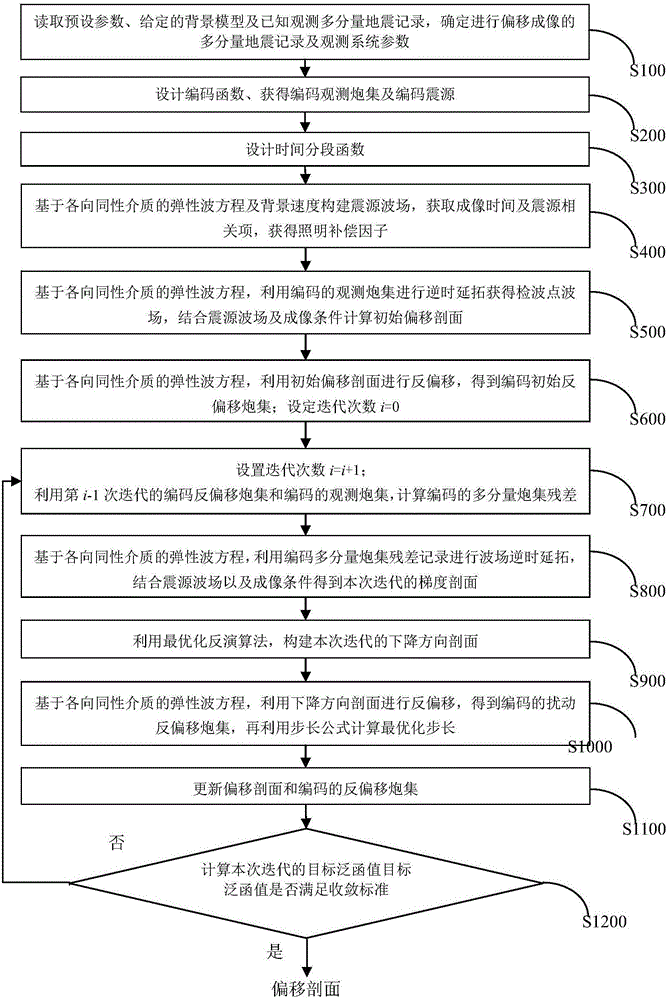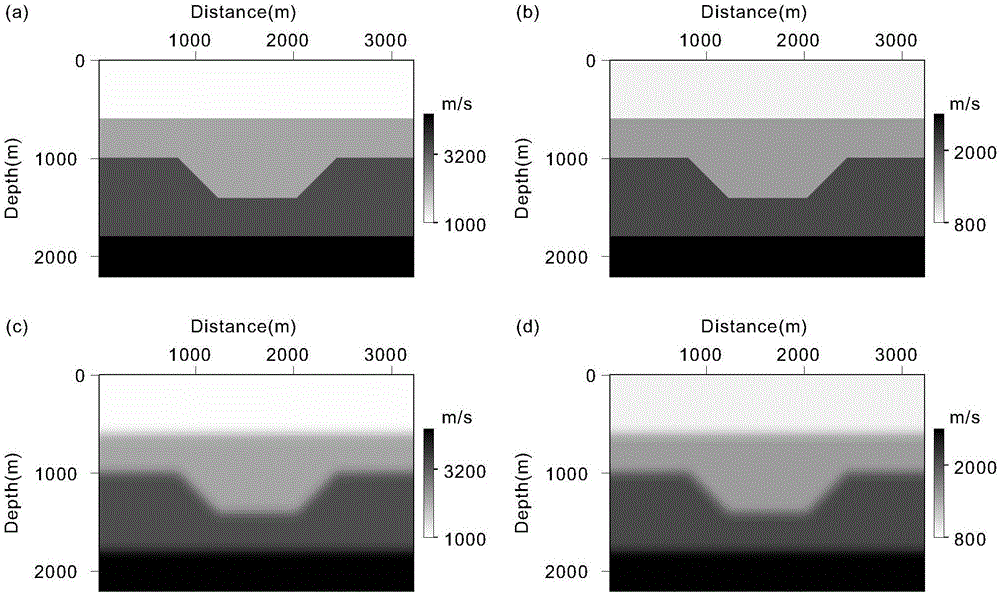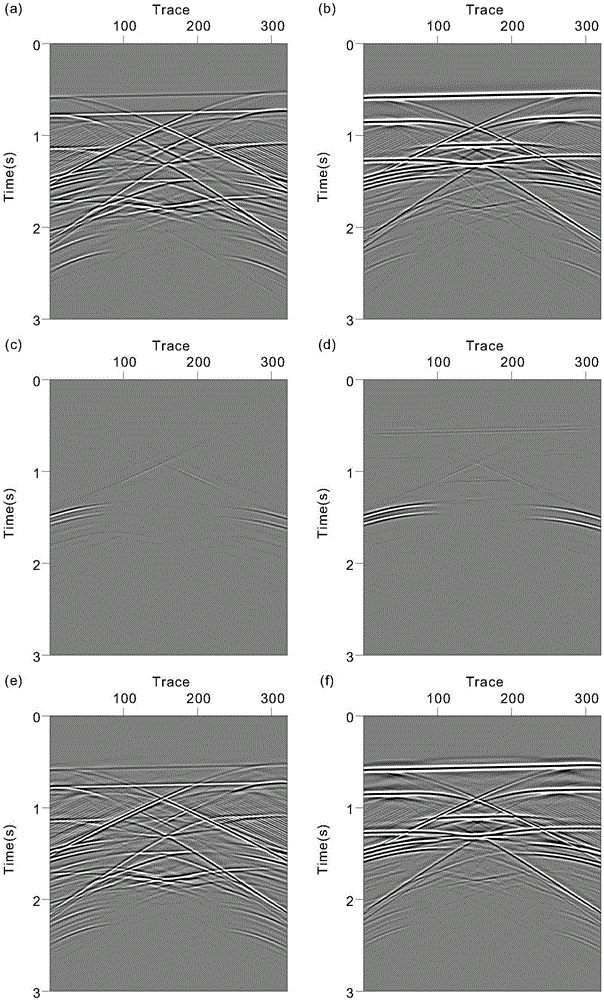High-efficiency multi-component seismic data true amplitude migration imaging method
A technology of migration imaging and seismic data, applied in the field of geophysical exploration, can solve problems such as changes in wave field amplitude and phase information, changes in wave field dynamics, elastic waves, and pre-stack depth migration of seismic data.
- Summary
- Abstract
- Description
- Claims
- Application Information
AI Technical Summary
Problems solved by technology
Method used
Image
Examples
example 1
[0154] figure 2 is a two-dimensional depression model diagram; where, figure 2 (a) is the longitudinal wave velocity model; figure 2 (b) is the shear wave velocity model; figure 2 (c) is the background P-wave velocity model; figure 2 (d) is the background shear wave velocity model. Set 21 ray parameters on this model, the initial ray parameter p=-117μs / m, the ray parameter interval is p=15μs / m, the seismic source used is the explosion source, the source wavelet is set as the Lake wavelet, and the main frequency is 20 Hz. image 3 is the encoded shot set after cutting off the direct wave, and the corresponding ray parameter p=0μs / m: where, image 3 (a) is the horizontal component of the coded observation record; image 3 (b) is the vertical component of the coded observation record; image 3 (c) is the initial de-migration record horizontal component of the encoding that utilizes the method of the present invention to gain; image 3 (d) is the initial de-migration ...
example 2
[0156] Figure 5 is the Marmousi-ii model: where, Figure 5 (a) is the longitudinal wave velocity model; Figure 5 (b) is the shear wave velocity model; Figure 5 (c) is the background P-wave velocity model; Figure 5 (d) is the background shear wave velocity model. This model is one of the international standard models to verify the imaging effects of various migration methods. Set 31 ray parameters on this model, the initial ray parameter p=-333μs / m, the ray parameter interval is p=20μs / m, the seismic source used is the explosion source, the source wavelet is set as the Lake wavelet, and the main frequency is 15 Hz. Image 6 yes Figure 5 The multi-shot stacked migration section of the Marmousi-ii model shown: where, Image 6 (a) is the I obtained by the traditional method α profile; Image 6 (b) is the I obtained by the traditional method β profile; Image 6 (c) is the I obtained by utilizing the method of the present invention α profile; Image 6 (d) is the I ...
example 3
[0158] Figure 7 is the SEG / EAGE Salt model: where, Figure 7 (a) is the longitudinal wave velocity model; Figure 7 (b) is the shear wave velocity model; Figure 7 (c) is the background P-wave velocity model; Figure 7 (d) is the background shear wave velocity model. This model is one of the international standard salt dome models to verify the imaging effects of various migration methods. Set 21 ray parameters on this model, the initial ray parameter p=-333μs / m, the ray parameter interval is p=30μs / m, the seismic source used is the explosion source, the source wavelet is set as the Lake wavelet, and the main frequency is 15 Hz. Figure 8 yes Figure 7 The multi-shot stacked migration section of the SEG / EAGESalt model shown: where, Figure 8 (a) is the I obtained by the traditional method α profile; Figure 8 (b) is the I obtained by the traditional method β profile; Figure 8 (c) is the I obtained by utilizing the method of the present invention α profile; Figure...
PUM
 Login to View More
Login to View More Abstract
Description
Claims
Application Information
 Login to View More
Login to View More - R&D
- Intellectual Property
- Life Sciences
- Materials
- Tech Scout
- Unparalleled Data Quality
- Higher Quality Content
- 60% Fewer Hallucinations
Browse by: Latest US Patents, China's latest patents, Technical Efficacy Thesaurus, Application Domain, Technology Topic, Popular Technical Reports.
© 2025 PatSnap. All rights reserved.Legal|Privacy policy|Modern Slavery Act Transparency Statement|Sitemap|About US| Contact US: help@patsnap.com



